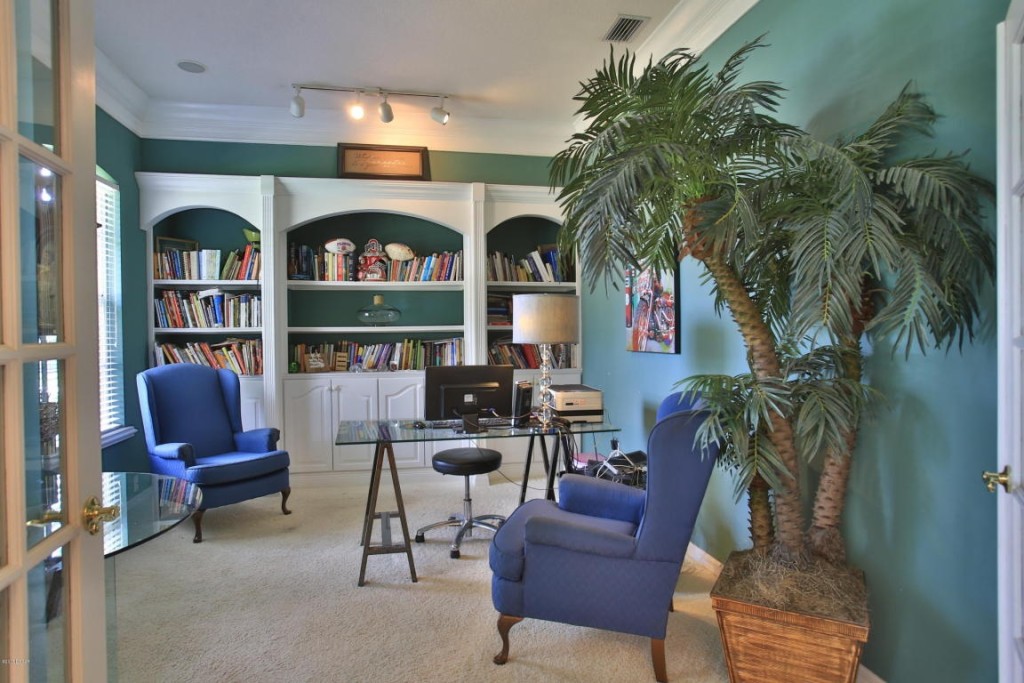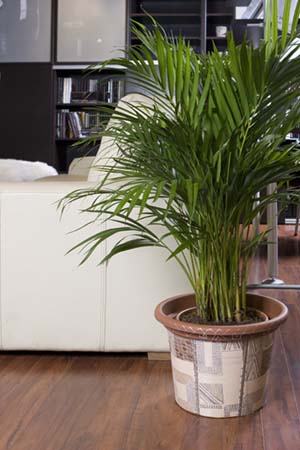There are many ways to bring the ambiance of the tropics into your home to get you through winter, but nothing conjures up visions of swaying coconut palms better than adding - what else? - potted palm trees as houseplants.
Light a coconut-scented candle, crank up the heat and some hula tunes, close your eyes and brush your face against a palm frond: You're not in the living room anymore, my friend, and your spouse isn’t looking up the psychiatrist's cell phone number on your behalf. You're in the tropics!
It might take a bit of imagination, but you'd be surprised at what one or two potted palm trees can accomplish with the right placement. Here’s how to transform your home with little more than a couple of potted palms.
Pick your spot
Place a single large palm in a rattan/wicker cachepot, basket or trashcan, set it beside an armchair, and it magically anchors the room with visual weight and tropical flair. Complete the look with a tropical cocktail of your choosing, or take it overboard by buying the parrot you've always wanted.

Ocean colors and an oversized potted palm set the scene for indulging tropical fantasies. Courtesy of Zillow Digs.
Want to make a fancy-schmancy vignette with a nothing more than a hall table and whatever you happen to have lying around? Hang an ornately framed mirror on the wall above the hall table and place two small parlor palms in ornate pots (especially urns) on the table - one to each side of the mirror.
Beneath the mirror and between the palms, stack a few large coffeetable books and fill a big bowl with pinecones, balls of yarn, or anything else you have lying around in quantity.
Choose the right palm
Easy palms that can tolerate neglect and low light are easy to find and include:
- Lady palm (Rhapis excelsa)
- Howea palm (Howea belmoreana)
- Bamboo palm (Chamaedorea seifrizii)
- Pygmy date palm (Phoenix roebelinii)
- Kentia palm (Howea forsteriana)
- Parlor palm (Chamaedorea elegans) - the easiest and most affordable palm of all.
Still, there are palms to avoid if you're just starting out. The majesty palm (Ravenea rivularis), cat palm (Chaemadorea cataractum), fishtail palm (Caryota mitis) and Chinese fan palm (Livistona chinensis), for example, need more light and humidity than most homes can provide - especially in the winter months.

Parlor palms require minimal attention to thrive.
Caring for palms
If you're growing one of the palms that I've included in the 'easy list', you don't have to do very much to keep them happy.
First, make sure the pot has drainage holes so that water won't collect and rot the roots. If you really want to use that pot without drainage holes, keep the plant in its plastic container and use the pretty one as a decorative cachepot, removing any water that accumulates in the base.
Place your palm in a spot with bright, indirect light - bright enough to read comfortably, but not so bright that you have to squint.
Palms in the 'easy' list will tolerate lower light, but will be more susceptible to problems like pests over time. Their petioles (leaf stems) will also become longer as they reach for more light, giving you a different-looking palm than the one you purchased.
Water your palm when the top one or two inches of the potting mix becomes dry. The potting mix shouldn't be dripping wet, nor should it be bone dry. Palms can take a lot of abuse, but they won't necessarily look good.
Fertilizing your palm isn't necessary, but using an organic palm fertilizer according to the label instructions will help it cope with any pests that arise. It will also provide any missing nutrients that palms need to stay healthy.
Palm problems
The most common pests on indoor palms are mealybugs, which are cottony fluffs that hide under leaves and inside leaf axils; scale insects, which appear as hard barnacle-like growths; and spider mites that are too tiny to see but can be identified by dried out leaves and specks of dusty black fecal matter.
Pests also spread viruses to indoor palms, resulting in distorted, streaked foliage and eventual death. There is no cure for viruses on palms, and any affected plants must be destroyed to prevent the viruses' spread. Luckily, viruses are rarely found in healthy indoor palms.
Related:
- The 5-Step Plan for Refreshing Tired Houseplants
- 10 Houseplants You Can’t Kill
- Troubleshooting Houseplant Woes
from Zillow Porchlight | Real Estate News, Advice and Inspiration http://www.zillow.com/blog/easy-care-palm-plants-191031/
via Reveeo
No comments:
Post a Comment